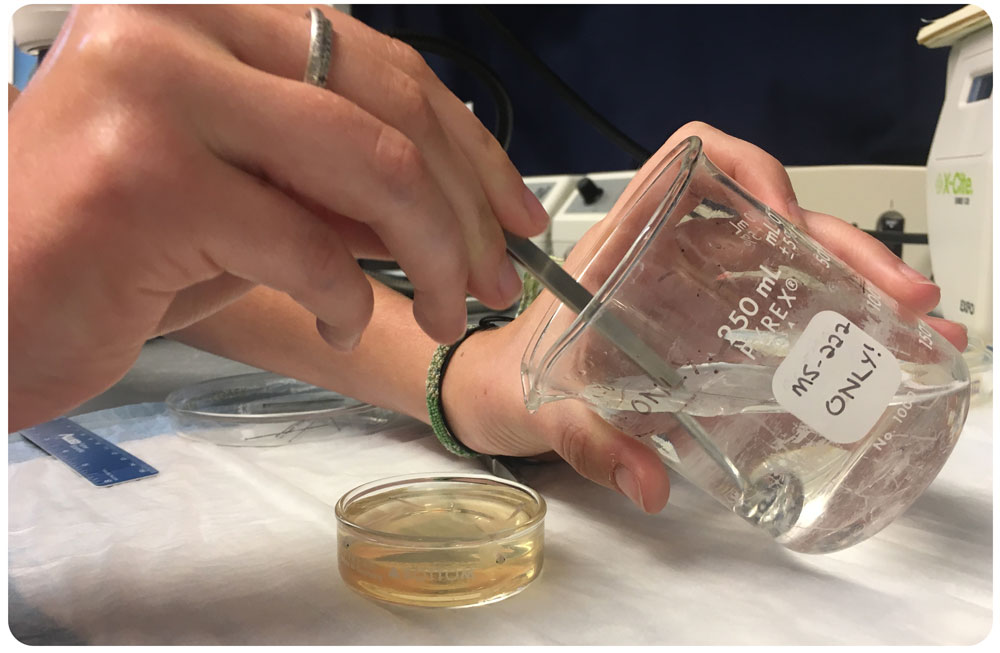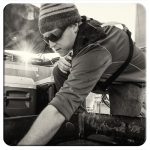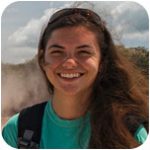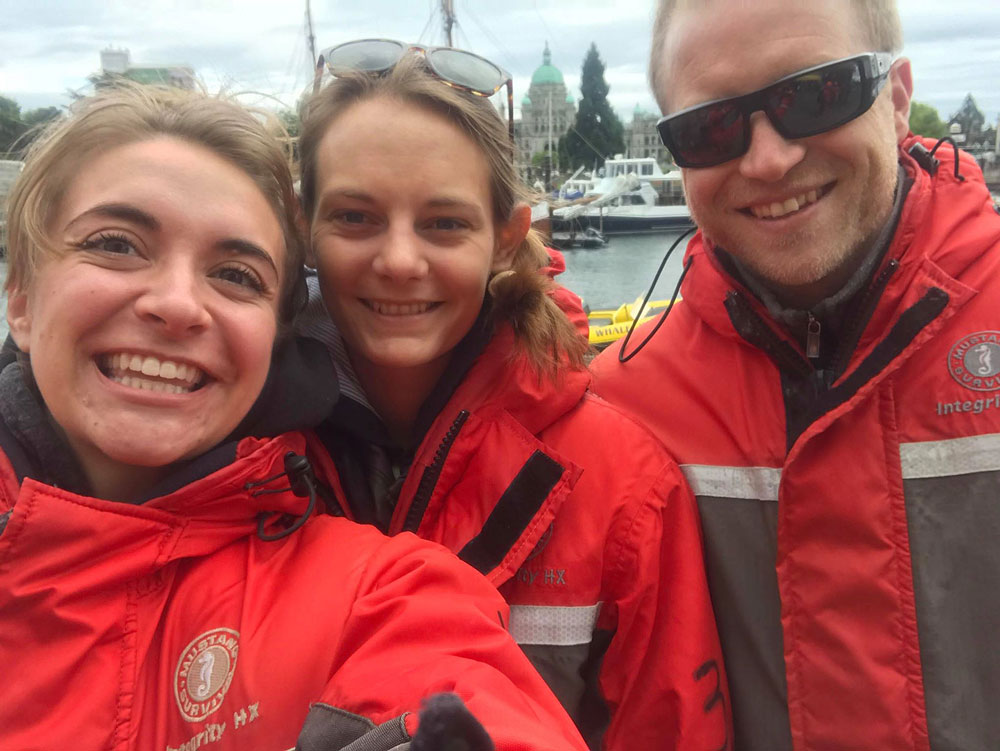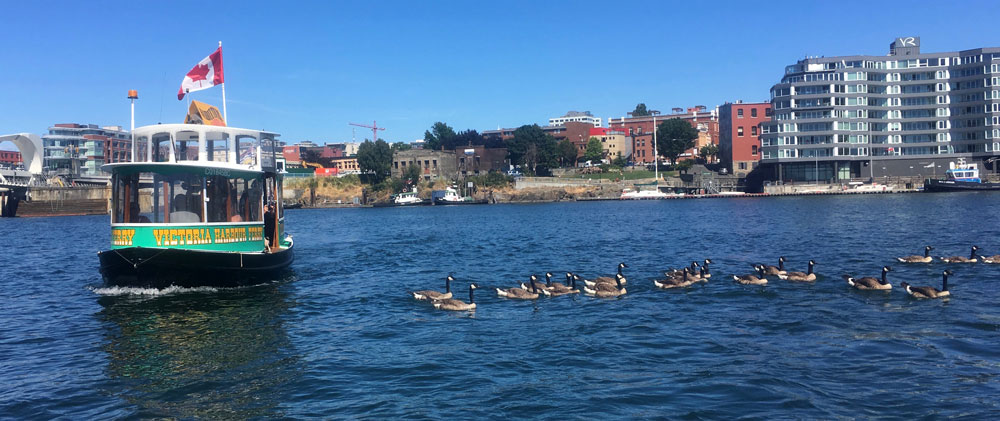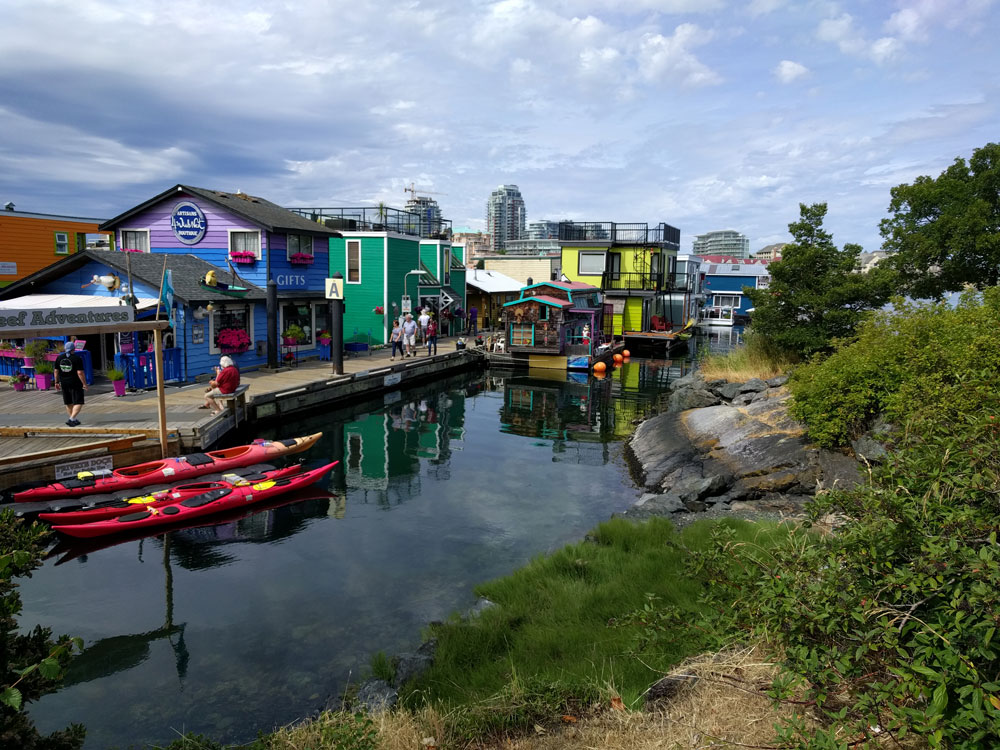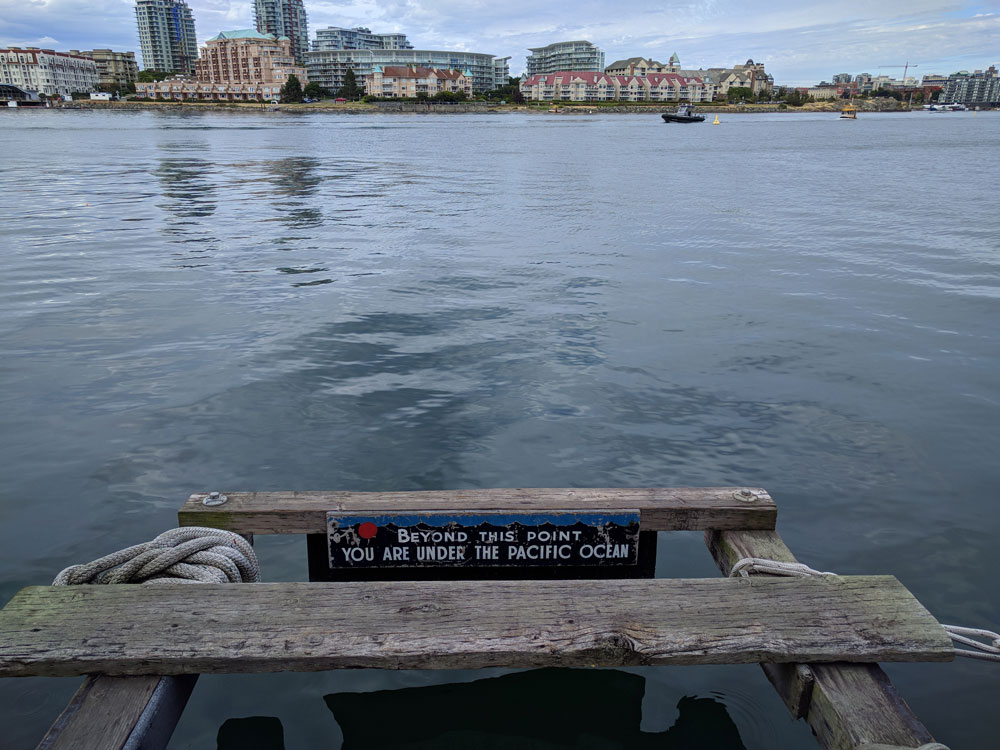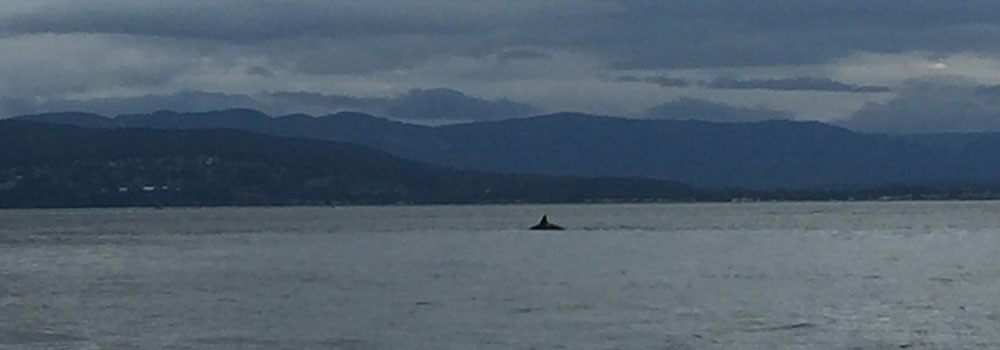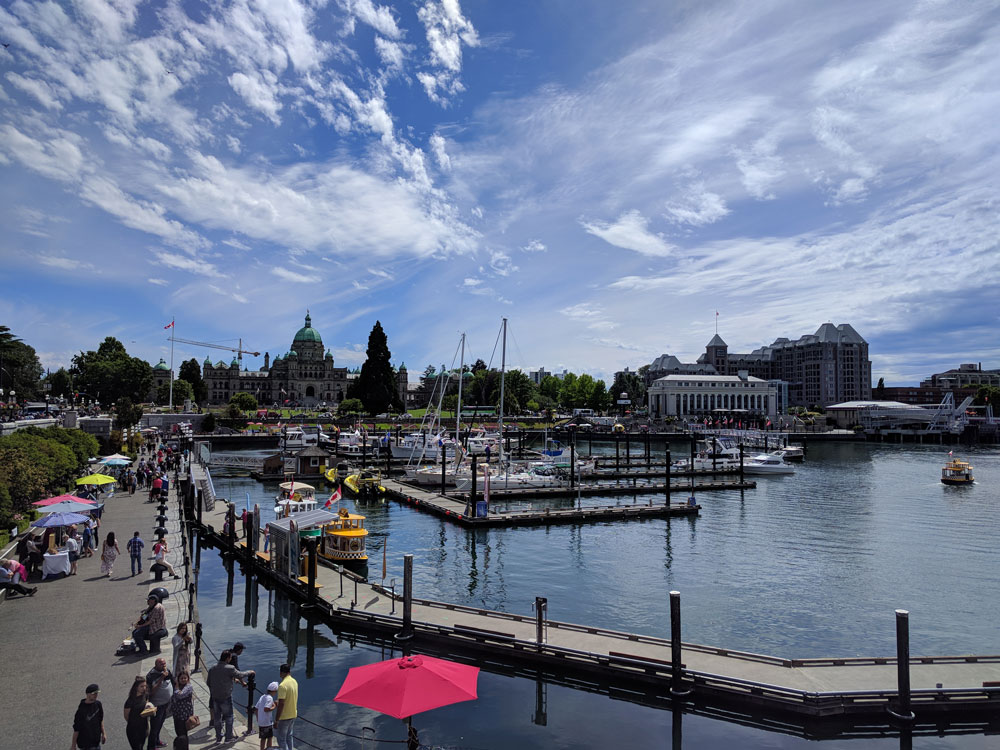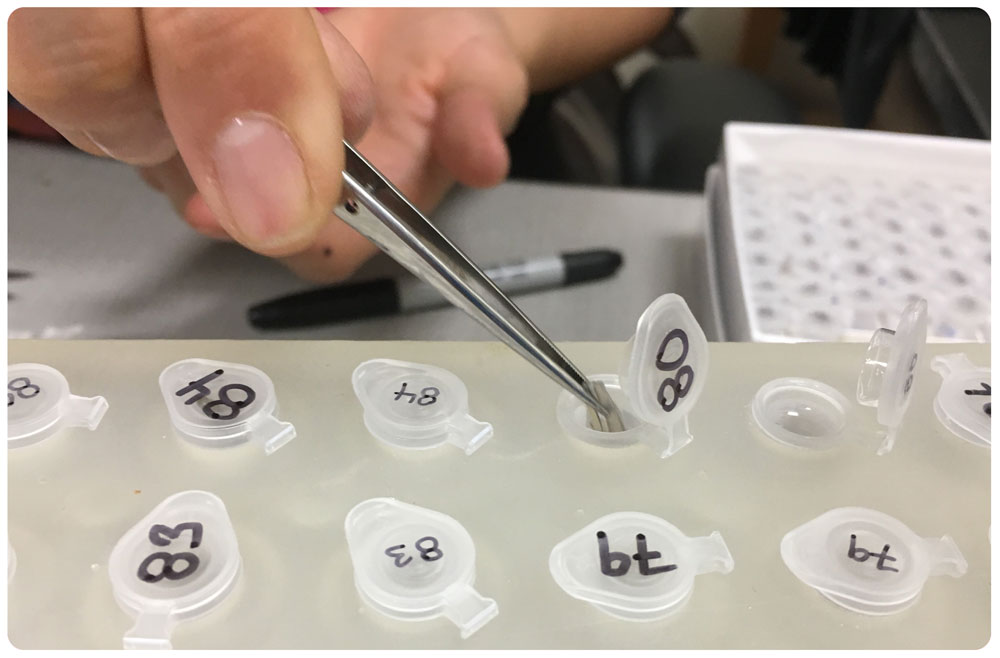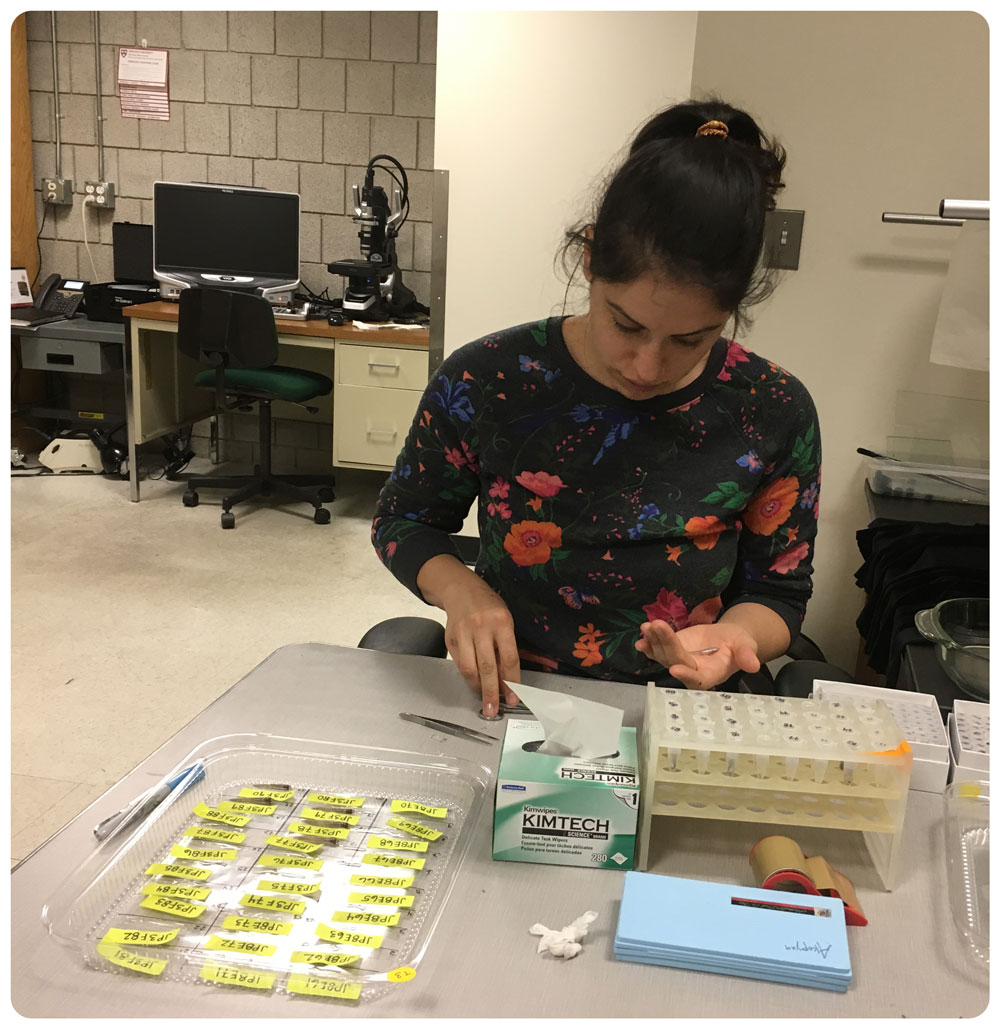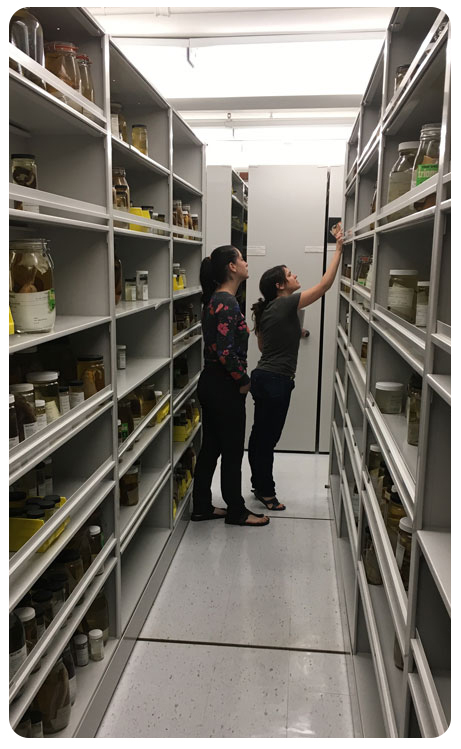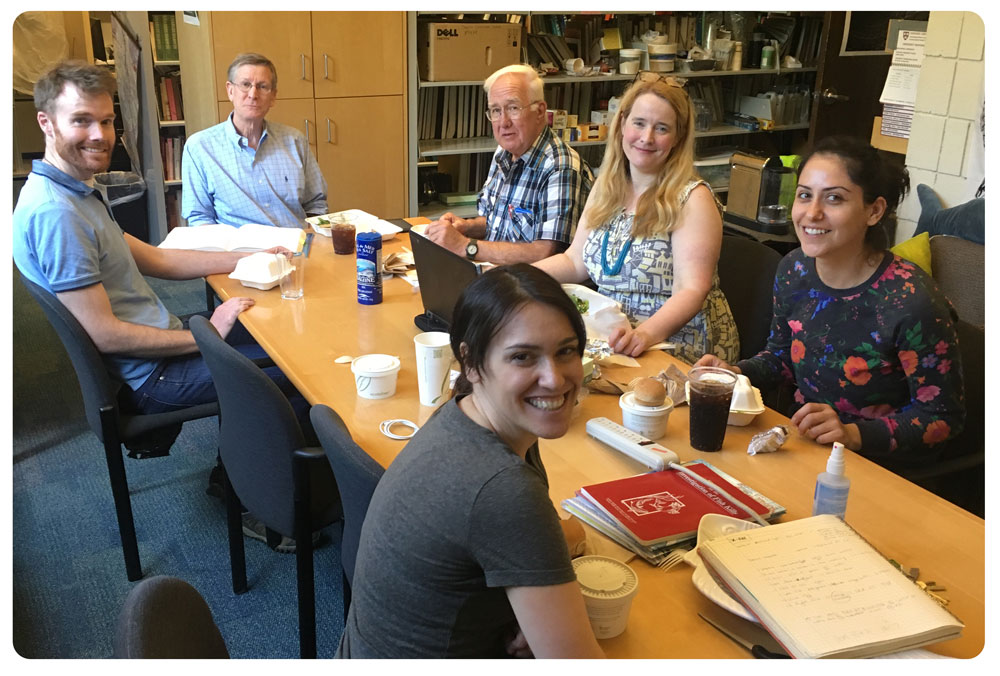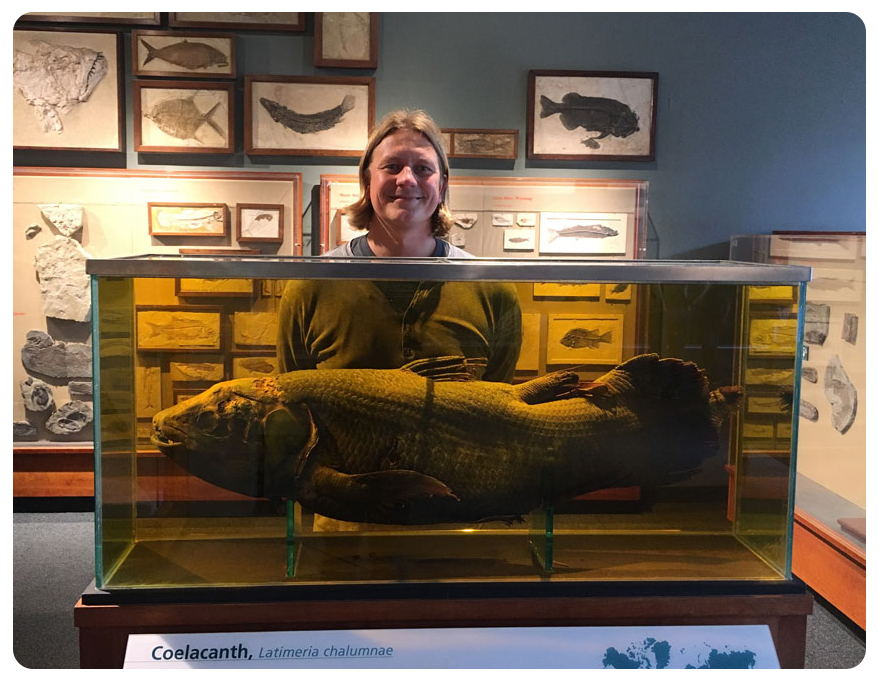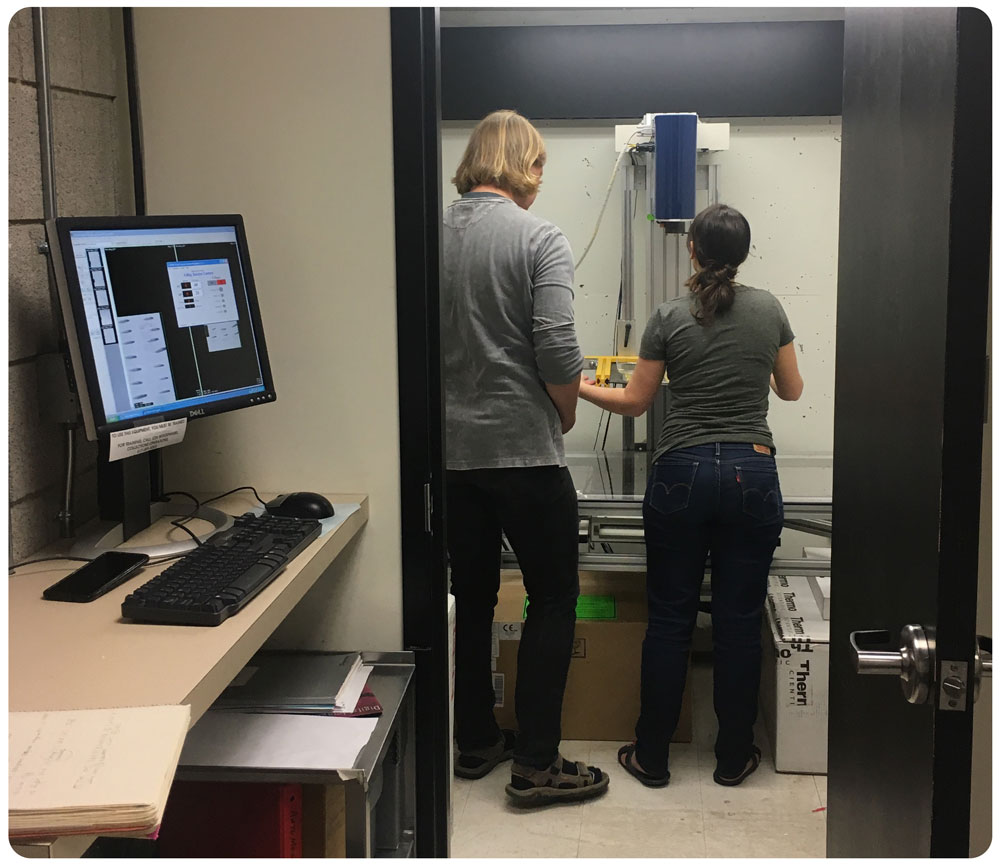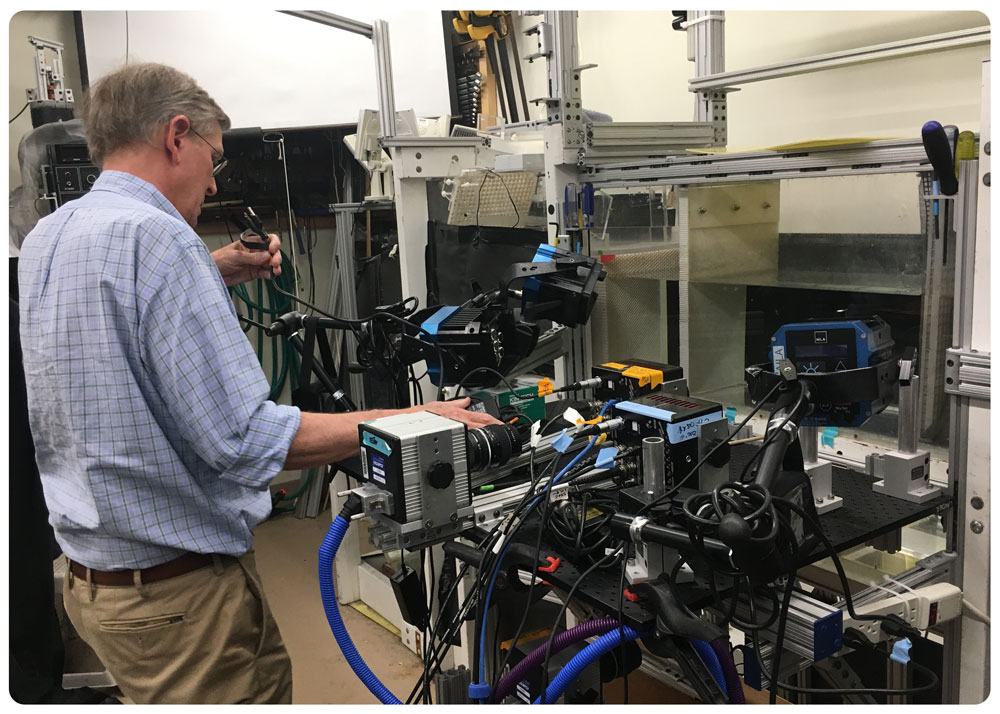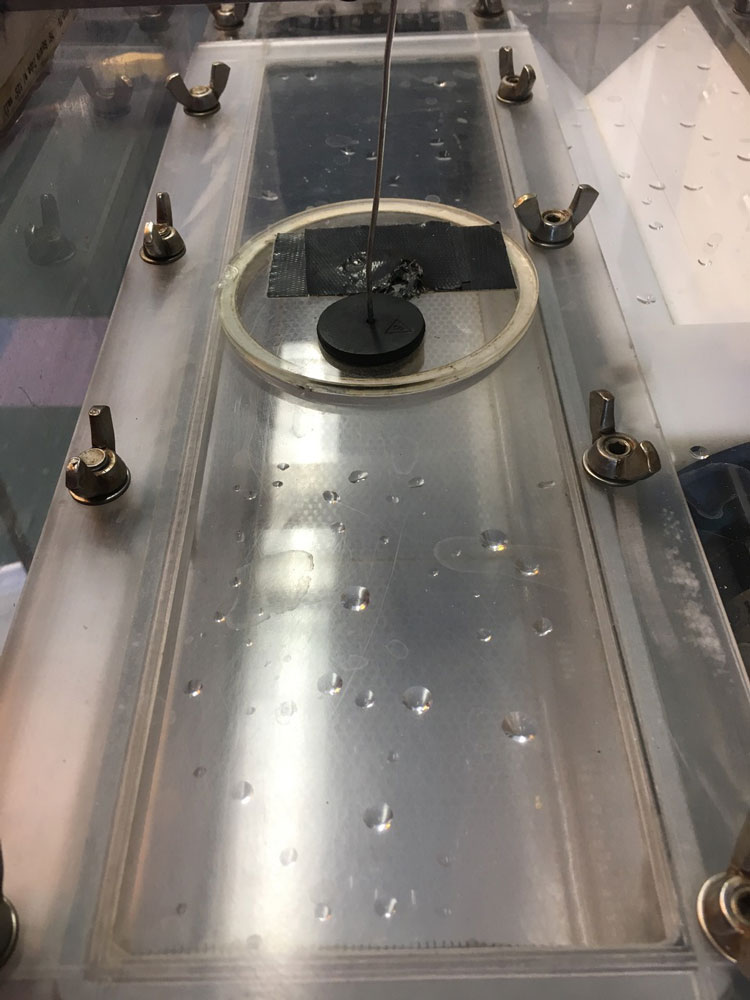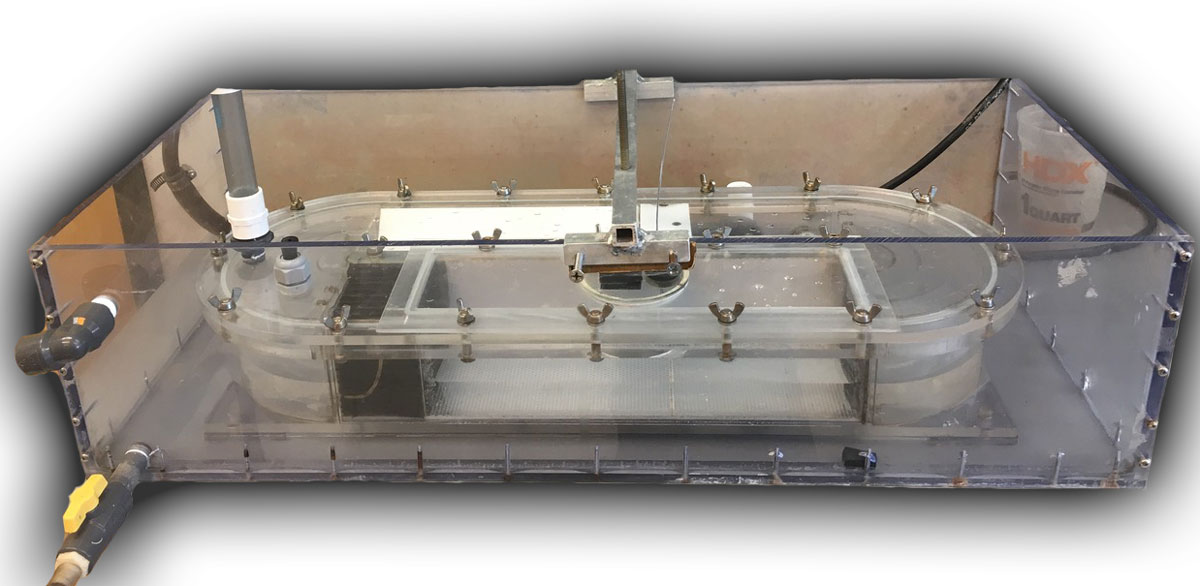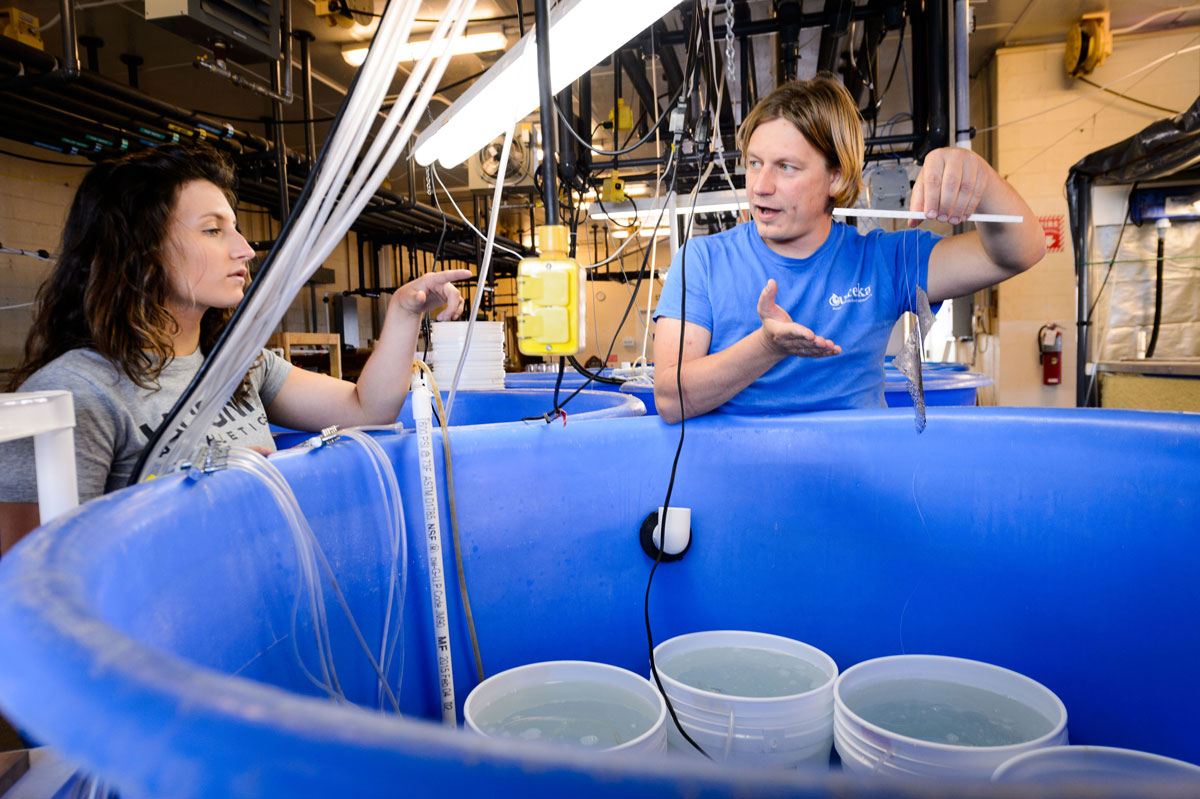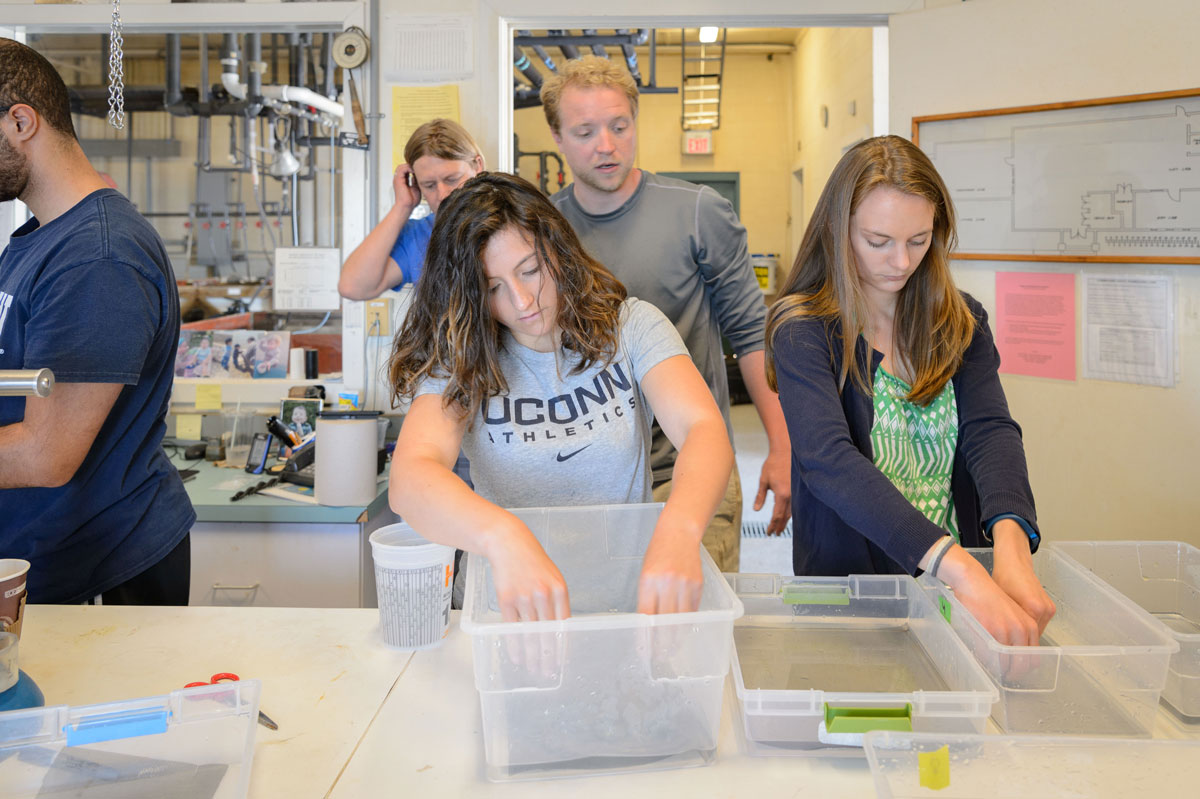This technique involves placing live fish in a fluorescent mitrochondrial stain for 5 minutes before imaging different areas of the fish under a dissecting microscope equipped with an epiflourescence light source. This allowed us to visualize small sense organs called neuromasts located in tubular canals in the head, trunk and tail, which form the fish sensory lateral line system used to detect water flows.
Projects
[New publication] Complex CO2 x temperature effects in Menidia offspring
Congrats, Chris, to the second chapter published!
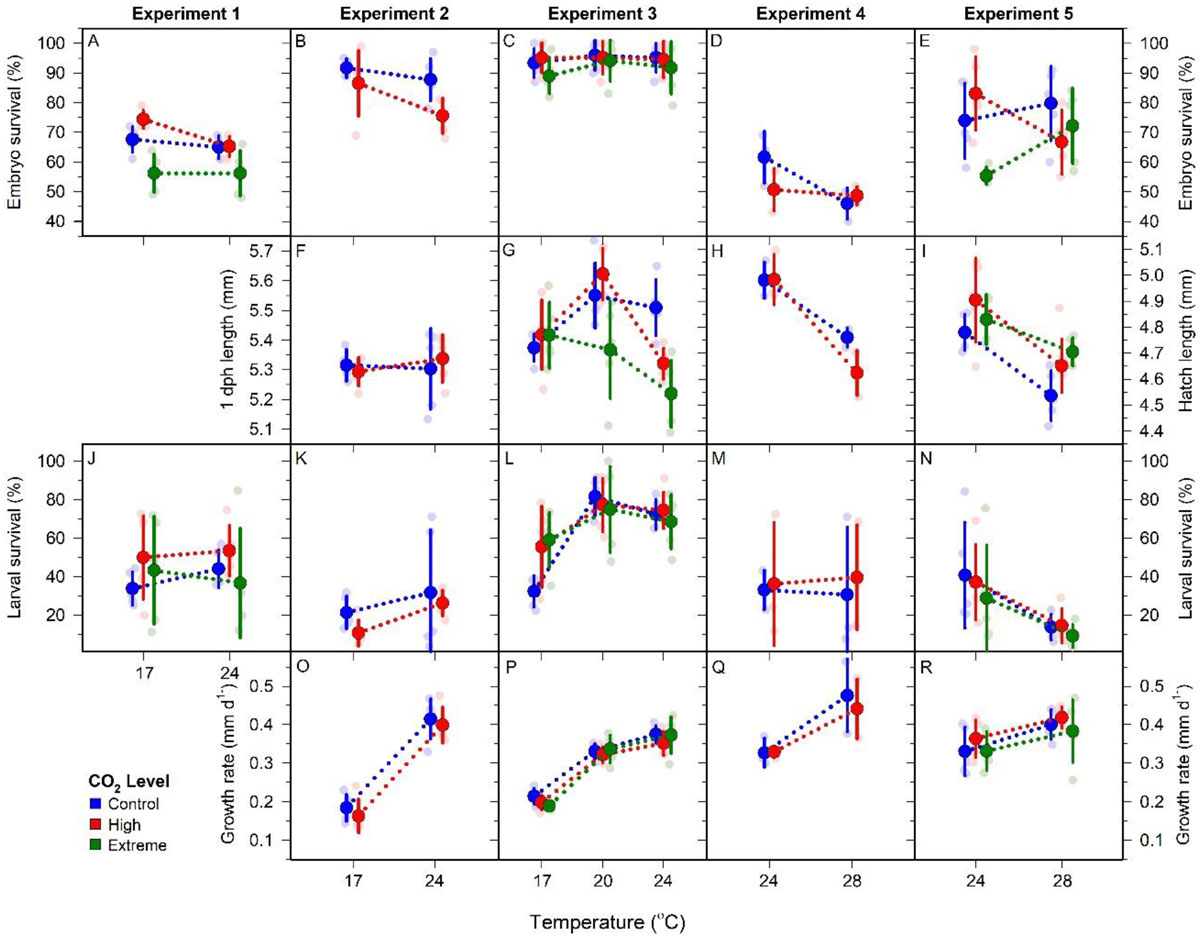
[Lab news] Baumann lab attends the Larval Fish Conference in Victoria
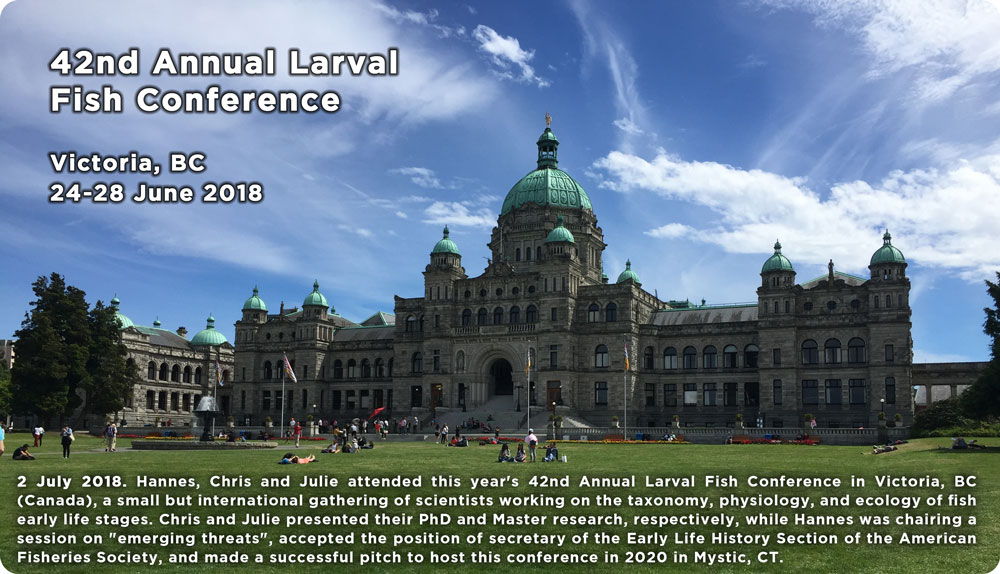


Ever since attending the American Fisheries Society conference in 2014, I’ve wanted to go to another fish-focused conference. I was lucky enough to attend the 42nd annual Larval Fish Conference this year in Victoria, British Columbia, and it surpassed all my expectations. The week started off with a larval fish identification workshop where we got to learn techniques from renowned larval fish experts (and see some really cool fish larvae!). The talks were impressive and thought-provoking, providing many new ideas for research and how to give an engaging talk. My favorite part was meeting all the larval fish ecologists whose publications I’ve been reading for my thesis. I spent most of my evenings exploring Victoria with other grad students attending the conference and left with many new friends from institutes all over the world! The trip ended with a whale watch, where we saw a pod of 5 Orcas. Overall, the Larval Fish Conference was a great experience that I hope to someday attend again!
Oral presentations:
- Pringle, J. and Baumann, H. Sex-specific growth and mortality patterns in juvenile Atlantic silversides (Menidia menidia) from Connecticut waters. Talk. 42nd Larval Fish Conference, Victoria, BC, Canada 24-28 June 2018
- Murray, C.S., Wiley, D., and Baumann, H. Early life stages of the northern sand lance Ammodytes dubius show high sensitivity to acidification and warming in a CO2 × temperature factorial experiment. Talk. 42nd Larval Fish Conference, Victoria, BC, Canada 24-28 June 2018
[Lab video] How a new silverside experiment starts
29 June 2018. A new experiment with Atlantic silversides (Menidia menidia) starts and as usual, it’s an all hand on deck operation. This time, we have Chris Tsang shadowing all of us and Emma professionally explaining the process.
Have a look for yourself!
[Lab news] Video of Mumford Cove probe swap
14 June 2018. Members of the Baumann and Mason lab went on a trip to Mumford Cove, today, and Chris Tsang went along with his GoPro. Thanks to Charlie, the skipper, the ride was smooth and a pleasure, a swapping our pH, Temperature, oxygen, and salinity sensor was successfully swapped with a new one recording for the next weeks in 30 minute intervals. Wes Hoffman from the Mason lab, collected zooplankton with a Bongo-net. Sydney Stark, our NSF-REU student this summer, came along just for the fun.
See the fun for yourself!
[Research news] A day at Harvards MCZ
The 282 fish are now split in a DNA sample for extraction and a body sample for further trait measurements.
A busy day in the Baumann Lab
On 18 May 2018, the Baumann lab teemed with activity. Maria Akopyan from Cornell University was busy phenotyping juvenile silversides for our Menidia Gene project. Mia and Mackenzie were busy working up field samples of silversides. And Hannes prepared adult silverside samples for later analyses.
[Funding] UConn Today announces new NSF-silverside project
Click on the link or the image blow to access the article in UConn Today …
[Lab news] The old swim flume coming back to life
4 April 2018. Today, Adelle Molina and Teresa Schwemmer from the Nye Lab at Stony Brook University visited us with a bunch of respirometry equipment in tow. We were trying to find out how to measure critical swimming speeds and oxygen consumption on individual silverside juveniles. This information, along with other individual traits such as growth, lipid content, and vertebral number will later be used in our new NSF-project examining the genetic underpinnings of local adaptation in this species.
One crucial piece of equipment to do this work is a swimming chamber, also called swim flume. The one we will use is almost 20 years old and has already been used for silverside work more than a decade ago. After a long odyssey through several labs and institutions in the US, we finally got hold of it again, gave it some serious TLC and now hope to resurrect it. Thanks to our pro’s from Stony Brook, the first tests were promising today! Thank you Adelle and Teresa.
[New publication] No CO2 effects on silverside starvation
- Baumann, H., Parks, E.M.*, and Murray, C.S.* (2018)
Starvation rates in larval and juvenile Atlantic silversides (Menidia menidia) are unaffected by high CO2 conditions.
Marine Biology 165:75-83



